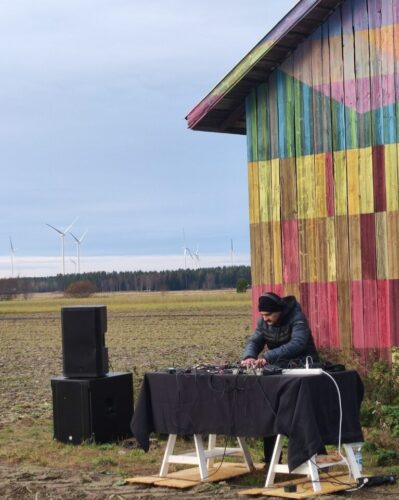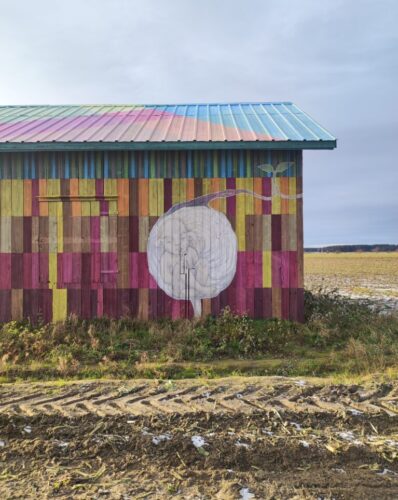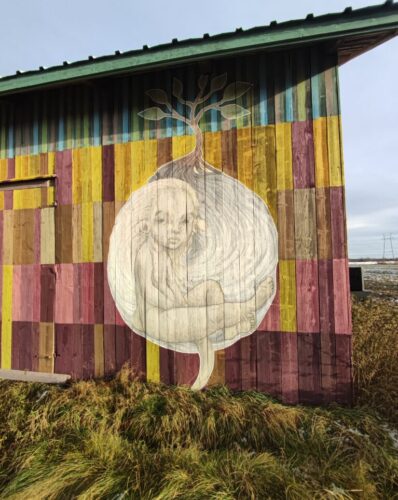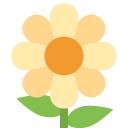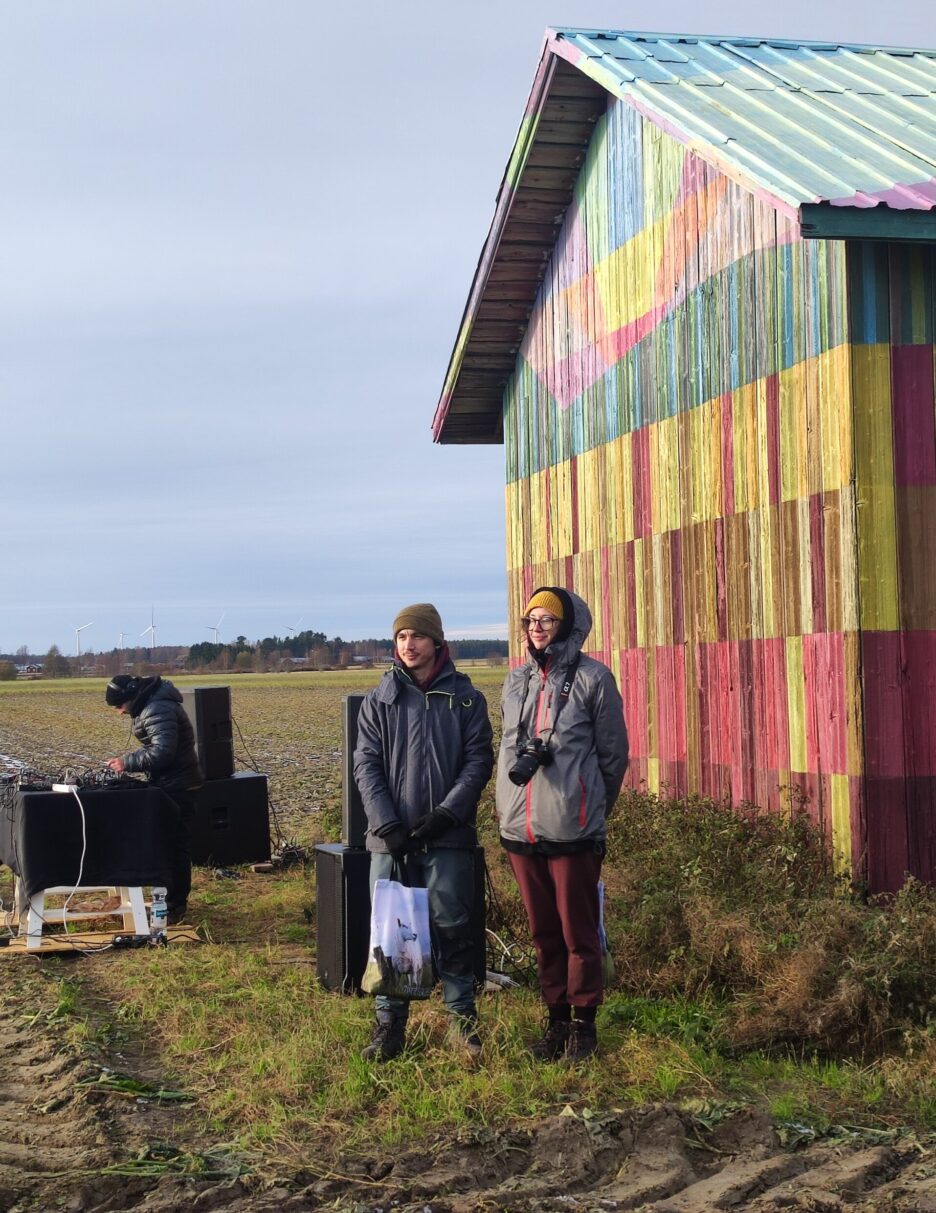
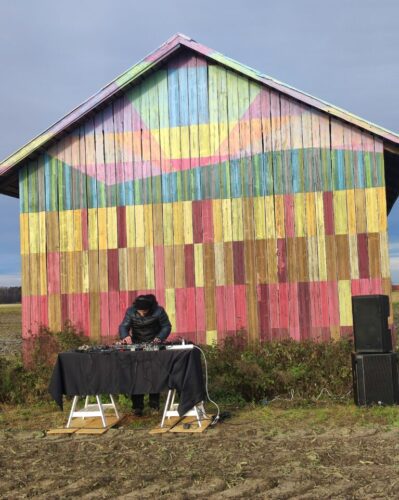
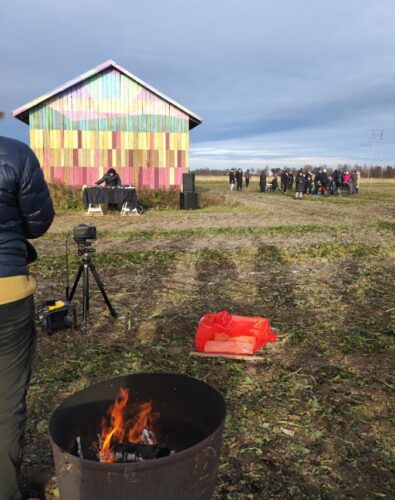
By Ivonne
It was a cold and cloudy Sunday. We already planned to go to Övermark in Närpes for an event called Awake, so we rented the electric mini-LIFTI car from the City of Vaasa. Awake is the name of this project that includes a mural in an old barn in a rural area and music also inspired by the context in which this joint creation was developed.
At the event, the mural made by Valentina Gelain and Bekim Hasaj, as well as the music created by Michele Uccheddu, would be officially presented to the community. Both artists, Gelatin and Hasaj, belong to the Black Box Genesis project. And, from what I read on their page about the event: “The art piece inaugurates the Black Box Genesis project of developing public art in rural areas of the Ostrobothnia region (D.P.A.R.A.).
As we arrived at the site, I liked to see people and some families from the town walking along the road towards the event. The mural was done in a 1947 barn that is in the middle of a field, in open countryside, so we parked and walked through the muddy field on an uneven surface where some type of tubers, I think they were sugar beets, had been harvested. Then, we bought coffee, pullat and makkarat, and got ready to enjoy the scene. I loved the colors chosen for the barn. They looked especially bright and beautiful when a ray of sunlight broke through the dark clouds, and it fascinated me that every time the sun’s rays escaped, they did not hit the same place, so the color of a different spot on the wood of the barn stood out. I’m thinking that the October moon (autumn moons are so fabulous!) would have a nice impact on how the barn looks. I want to return in the summer to see with my own eyes how the sun impacts the color. The metaphorical placental images of the seed give another dimension to this painting because we stop very little to think about how surprising it is that the union of seed and soil (and other ingredients involved in the process), creates life. It is intrinsically related to the mural being in the middle of a planting field. If we see the details of these figures, we can even think of them as mythological beings that represent extraterrestrial life that we cannot see with the naked eye. And I say extraterrestrial thinking that they are totally terrestrial but they develop beyond the earth that our eyes can see: in a womb underground.
I understand that Michelle created set of songs in this project, and one of them is the song “Under”. I think he also played other of his music during the presentation. I really liked discovering the sounds of nature in the music. The sound of water, for example. The sounds of animals. Birds, like the singing and screeching of seagulls, very characteristic of this geography. I’m always a fan of drums, so for me the mix of electronic music, percussion and the experimental touch, worked very well, it was totally enjoyable. On the other hand, songs were played with loud and intense sounds that suddenly jumped into the music and stressed me out and caused anxiety. I suspect that this reaction was triggered because for me those sounds have something to do with war. It’s actually something that has more to do with my life experience and how art impacts each person in different ways. Michele told me that those strident sounds are the spectacular sounds of Finnish frozen lakes. How cool, right? Overall, I loved the music. Even those little parts that made me anxious, I know they are there for a reason. I would like to know more about those specific tracks, so I hope to have the opportunity to talk with Michelle more about it. In “Under”, it is evident that Uccheddu was inspired by the context that surrounds that community and I imagine that the process of working on the multidisciplinary project with Hasaj and Gelain must have been interesting and also very nourishing the musical part and vice versa. By the way, we were watching Michelle and couldn’t stop thinking about how hard it is playing outdoors in the cold weather. We could see that his hands were very, very red! We appreciated his work ‘on the field’ very much.
What I point out most about projects like this one is that they manage to be included in the community of the space where they are created, that the local people feel invited and part of. It was nice to see families with children there and people of all ages. The atmosphere felt comfortable, people were smiling, interested in the mural, the music and in being together talking. Evidently, they were enjoying themselves. Excellent that these types of projects are promoted in rural and decentralized areas. Although I must say that even in the city of Vaasa itself, projects like this are urgent. I haven’t seen anything similar outdoors here.
And just as a final note, do not miss the great aerial video they created and have shared in their social media.
